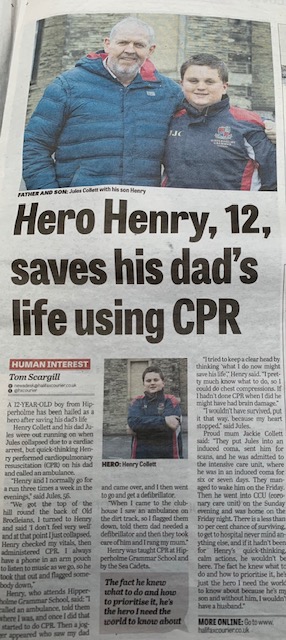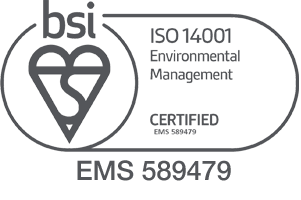


01/11/2021
How I saved my dad’s life, a case for why maximising survival needs a chain of time critical actions.
Recently we looked on in horror as the footballer, Christian Erikson, collapsed on the football pitch during the European Football Finals. His survival was in large part due to a system that was immediately available and efficiently joined up to ensure all lifesaving actions were in place, delivered effectively within acceptable time critical parameters. Saving lives is rarely down to one action in isolation, but often a series of decision and actions that contribute to a successful outcome.
Recently our Senior Partner, Colin Smart, heard the news that one of his friends “Joules” had suffered a cardiac arrest and thankfully had made it alive to hospital and was being cared for in Cardiac Care. The story of how he got there is not only astonishing, it highlights well the need for a cascade of multiple tasks performed time critically and efficiently. So let’s re-tell the story.
Joules and his son, 13-year-old Henry, were out running in a local wood. With very little warning and no past relevant medical history, Joules collapsed and suffered a cardiac arrest. The location of their run was semi-remote with no immediate assistance available. Well, cometh the hour, cometh the boy! Henry at this point undertook an exemplary an extraordinary set of tasks that ensured the survival of his dad.
1st he started immediate and effective CPR.
2nd he called 999 and clearly stated his scenario and location.
3rd he shouted to another runner to assist and directed him to continue CPR, stating “I’m going to run to the rugby club (300 metres away) as I know there is a defibrillator in the Club House”.
4th on his way he flagged down an ambulance and directed them concisely to the scene.
5th he phoned is mum and apologised she was last on this list but that he had to get everything organised.
Within 30 minutes Joules was inside the Yorkshire Air Ambulance and on route to definitive cardiac care. We are pleased to say he survived and has absolutely no adverse effects.
The set of tasks carried out by Henry with no warning and within an incredibly time critical scenario is truly inspiring for anyone, far less a 13-year-old boy who had just seen his dad collapse. Take any one of the tasks out and the chain of survival would have been broken. It would not have been good enough just to do CPR, as Joules needed access to early defibrillation, advance cardiac life-support and early access to definitive care.
The quest to maximise survival and minimise suffering often relies on not just one task in isolation but a series of them joined up in a time critical effect manner. If we look at the multiple casualty scenario the same concept applies, in that any critical task cannot sit in isolation but must be part of an effective matrix leading to optimum care.
Triage is often stated as a cornerstone of multiple casualty care, but it cannot sit in isolation if it is to be of significant benefit. We know to maximise the chance of survival for a seriously injured person will require delivering them to definitive care within an acceptable time, so although triage is absolutely critical it will only become of benefit when it’s outputs, such as gathering initial numbers and severity of casualties, are correctly handled and facilitate good resourcing and command decisions.
Going back to our story, what saved Joules’ life was a chain of events initiated wonderfully by Henry. There was a very strong “chain of survival” throughout all stages of treatment and transfer.
Our Smart Triage system recognises the need to avoid critical tasks sitting in isolation. Our very first designs were based on creating a modular set of equipment assisting each responder to carry out their tasks, but also enhancing the ability to pass on the key areas that require the next link in the chain to function. Over the years we have refined Smart Triage but this critical application has been maintained throughout.
So, to end or story. We are pleased to say Joules has made a full recovery and is due to start running again soon. We can only applaud how Henry responded in such a responsible, effect manner, such a wonderful example of how to perform under extreme pressure and get it right. Strong chains that link critical tasks are key to maximising survival in many areas of care. We would welcome your thoughts and examples on where chains have worked well or maybe did not work so well but we learned from them.








